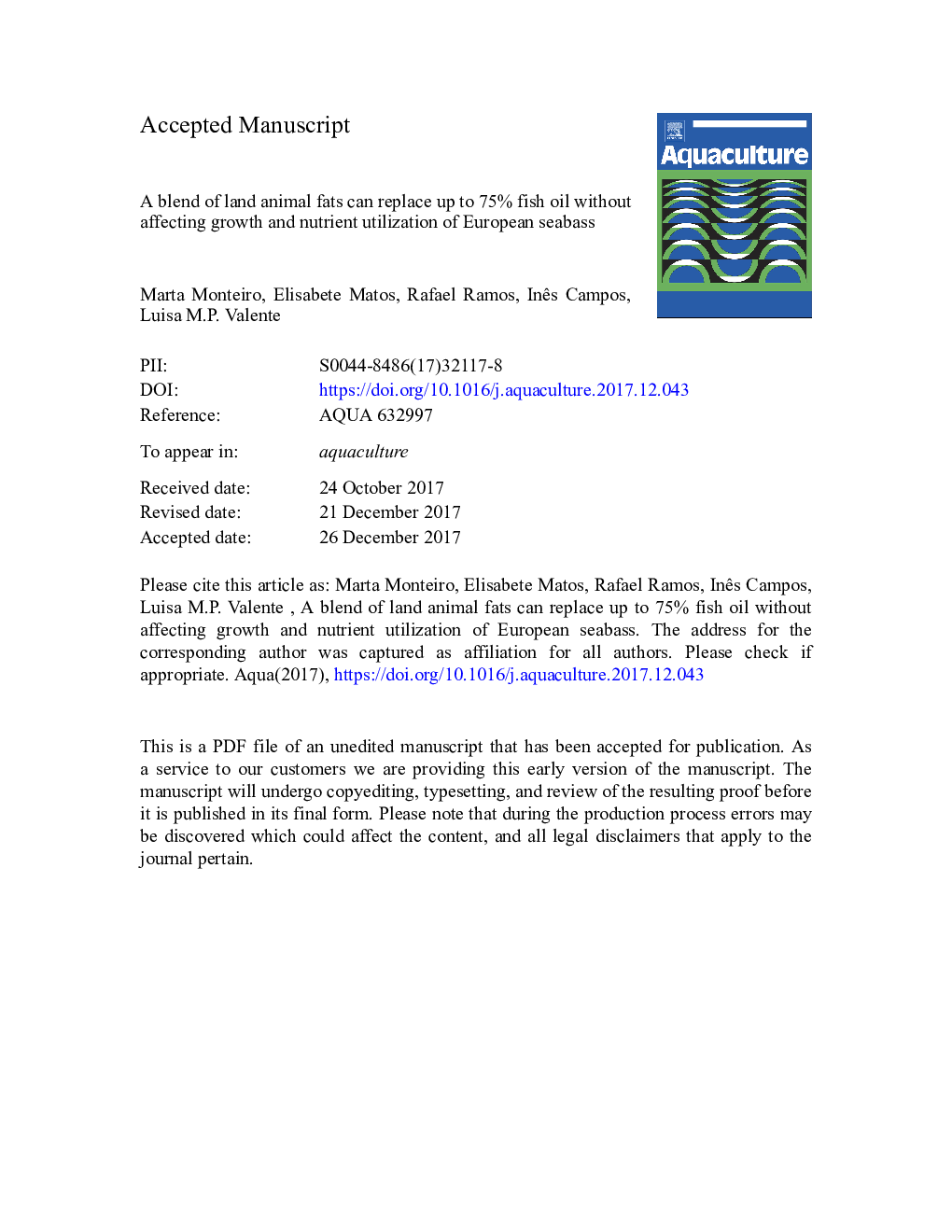| Article ID | Journal | Published Year | Pages | File Type |
|---|---|---|---|---|
| 8493422 | Aquaculture | 2018 | 40 Pages |
Abstract
Protein and energy ADCs were not affected by the dietary treatments, but lipid ADC was lowest in the diet devoid of fish oil (100PFMF). Replacement of fish oil by a blend of land animal fats did not affect daily growth index, feed conversion ratio or nutrient utilization. Whole body composition remained unaffected by dietary treatments, but there was a significant increase in the hepatosomatic index of fish fed 100PFMF. Total replacement of fish oil by PFMF resulted in increased hepatic vacuolation, apparent steatosis and compromised glycogen deposition. Malic enzyme activity was lowest in fish fed 100PFMF. A significant reduction of muscle eicosapentaenoic (EPA) and docosahexaenoic acids (DHA) content was observed with decreasing levels of dietary fish oil. Results indicate that juvenile seabass can effectively use diets with high levels of land animal fats as alternative lipid source, up to 75% fish oil replacement, without impairing nutrient intake, growth performance and nutrient utilization. Despite alteration in the muscle fatty acid profile, European seabass fed up to 75% PFMF can still retain high levels of EPAÂ +Â DHA in the muscle (>Â 0.3Â g/100Â g).
Keywords
Related Topics
Life Sciences
Agricultural and Biological Sciences
Aquatic Science
Authors
Marta Monteiro, Elisabete Matos, Rafael Ramos, Inês Campos, Luisa M.P. Valente,
